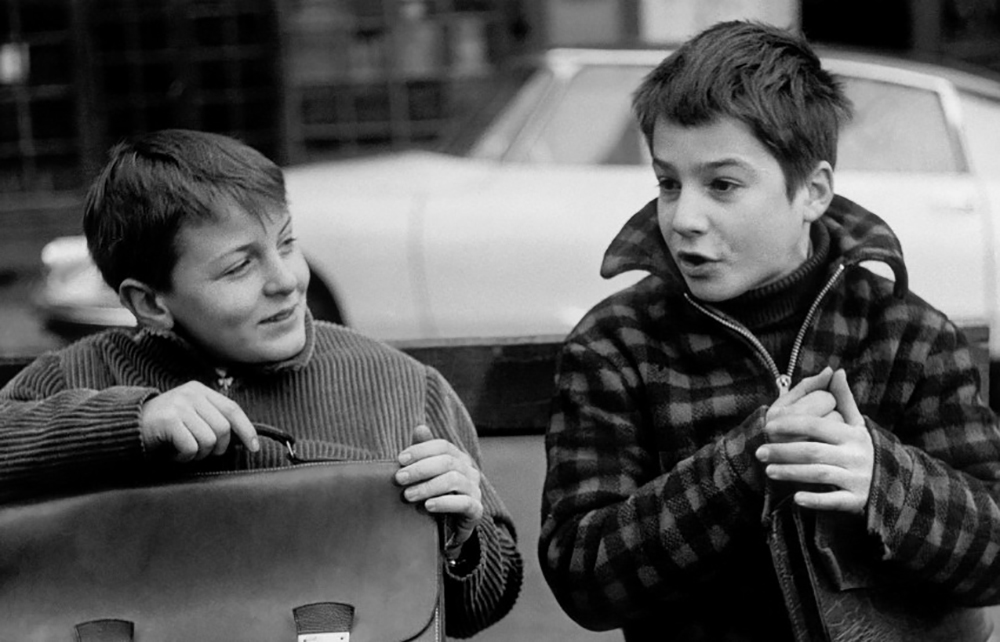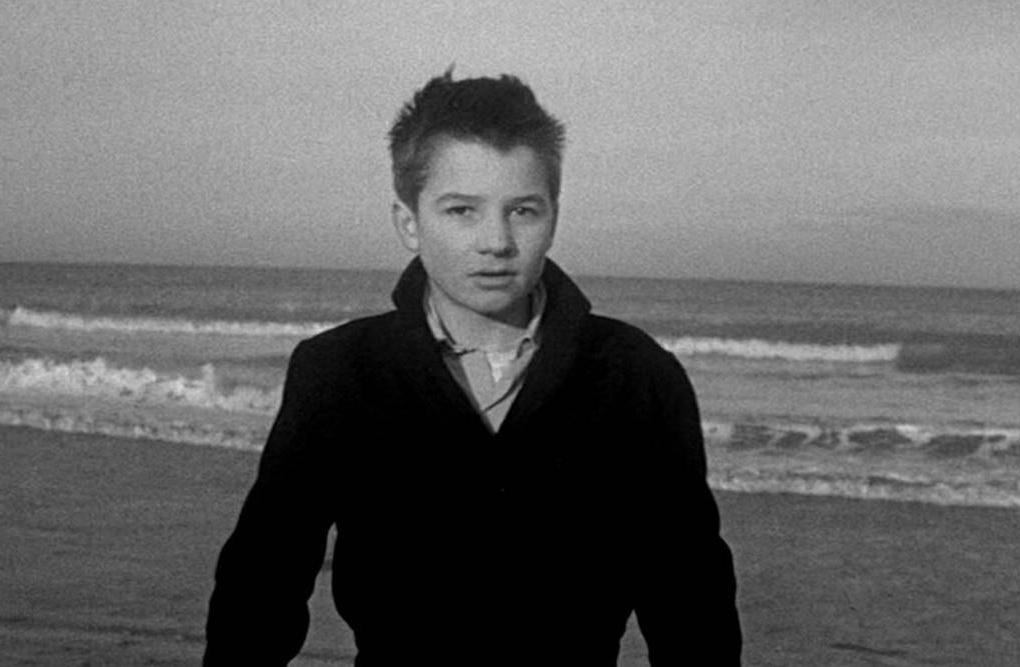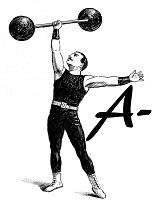Truffaut’s autobiographical tale follows the descent of scrappy young Antoine Doinel (Jean-Pierre Léaud), from full-time student to part-time criminal. Antoine’s development is arrested by both forced (skipping school, stealing a typewriter, telling his teacher that his mom’s dead) and unforced (demanding teachers, difficult parents) errors, and his enterprising nature creates as many problems as it solves. Antoine remains film’s most indelible enfant terrible, a model not just for Truffaut—who would go on to make four more films with this character—but serving as a benchmark for a variety of international auteurs, ranging from the prickly, precocious protagonists of Noah Baumbach (“The Squid and the Whale”) and Wes Anderson (“Rushmore”) to the almost surreal, hard-luck youngsters featured in the universes of Paul Thomas Anderson (Stanley Spector of “Magnolia”) and Wim Wenders (Alice, “Alice in the Cities”).
‘The 400 Blows’ is More than the Sum of its Inspirations
The film is more than just the sum of the art and characters that it inspired. Although its undeniable influence has helped enshrine it in cinephilia circles (it ranked 13th and 39th, respectively, in the directors’ and critics’ poll of Sight & Sound’s 2012 greatest films ever), that lofty status shouldn’t crowd the conversation about the quality of the storytelling, or, alternatively, the film’s shortcomings. Truffaut layers on action at a furious pace. Even when Antoine is packed into the tiny apartment he shares with his mom (Claire Maurier) and dad (Albert Remy), nothing is stale or stagnant. And yet Truffaut’s clear alignment with his screen alter-ego means that some of the adults come off as one-note antagonists.
Also Read: Trailers: ‘Hellraiser’ (2022) – What Sights Does it Have to Show Us?
But there’s humor in those portrayals, helping to prevent “The 400 Blows” from slipping into sentimental tropes, or simple character sketches. At the beginning, Antoine is in a classroom listening to his blowhard teacher’s (Guy Decomble) lecture. Of course, Antoine would rather be anywhere else, and when the teacher seizes the pin-up picture Antoine was drawing over, he’s instructed to sit in the corner, missing recess (“It’s a privilege!”). The punishment doesn’t quite fit the crime, and it gives us the sense of what we’re in for: escalating indiscretions in response to out-of-touch adults, which will no doubt end poorly for our little hero.
Truffaut’s Decision to Center the Narrative Around a Young Boy
Centering the narrative around a young boy (Léaud was 14 at the time) was another bold stroke. And while Truffaut (27 years old when he made this film) surely loves Antoine, viewers might have conflicting feelings. Antoine smokes, steals money from his parents, and lies to people who could potentially help him. In this rendering, Truffaut associates Antoine more with the put-upon eccentrics (a la Charlie Chaplin and Buster Keaton), or lone-wolf gangsters (especially those played by Humphrey Bogart) he admired so much in American films. Children in movies just didn’t do these things. And just when it seemed like Truffaut was leaning too hard against the adults, Antoine would snap back with petulant behavior that would make the most compassionate viewer think, enough already. Eventually, his parents admitted as much. They allowed Antoine to spend a night in jail and afterwards, sent him away to a juvenile detention center.

Truffaut tests our patience not because Antoine is insufferable—on the contrary, he’s totally entertaining and charismatic—rather, the sequences seem to repeat themselves. The arc of Antoine inciting trouble, being punished/forgiven/doing it again threatens to turn the film into a 100-minute gag. Of course, we’re in good hands here; and when Antoine’s tragic finale seems fait accompli, Truffaut interjects with one of the most breathtaking endings in film history, starting with the nearly-unbroken shot of Antoine running down the highway after escaping from the detention facility. Antoine makes it to the beach—a destination foreshadowed earlier when he and a friend talk about going into business together and retiring to the beach—and Truffaut closes the film with a zoom-in and then freeze-frame of his face.
One of the First and Most Famous ‘New Wave’ Features
Capturing Antoine in this way represents a kind of bittersweet triumph. Surely, he’ll be found, and sent back to the detention center. At some point, he’ll go home; but it’s hard to imagine either of his parents embracing that, having had a taste of independence from this son who’s been such a burden. In one of the film’s saddest moments, we find out that Antoine once lived in a foster home when his mother couldn’t handle the pressure of raising him. Truffaut shows equal doses of sympathy and scorn to Antoine’s parents. He frames their struggles more as products of the world around them, but also putting them in precarious situations (his mother has an affair, father lets Antoine stay in jail) that show their true colors, or, what side Truffaut is on in the battle of Antoine v. Adults.
Also Read: Review: Dominik’s Lynchian ‘Blonde’ is Equally Horrifying, Devastating, and Hypnotizing
Truffaut’s film endures not just because it was one of the first and most famous New Wave features, but because it’s true original, a painful and honest evocation of Antoine’s childhood experience presented without a pat resolution. While it’s often credited as the work that launched the New Wave, it’s more accurate to say Truffaut and his fellow critics, under the tutelage of Andre Bazin (to whom “The 400 Blows” is dedicated) at Cahiers du Cinema laid the groundwork for the future of film earlier in the decade. Godard was one of those colleagues, and the following year, Truffaut wrote the original scenario for “Breathless.” The rest is history, and Godard and Truffaut (who died in 1984) have maintained their perches as the premier voices of the most influential cinematic movement of all time. Those two men are gone, but the voices and films are louder than ever.
Watch ‘The 400 Blows’ on the Big Screen, Remastered
“The 400 Blows” will run at the Film Forum in NYC from Friday, September 23 – Thursday, October 6, along with the retrospective “The Further Adventures of Antoine Doinel.”
Support the Site: Consider becoming a sponsor to unlock exclusive, member-only content and help support The Movie Buff!


